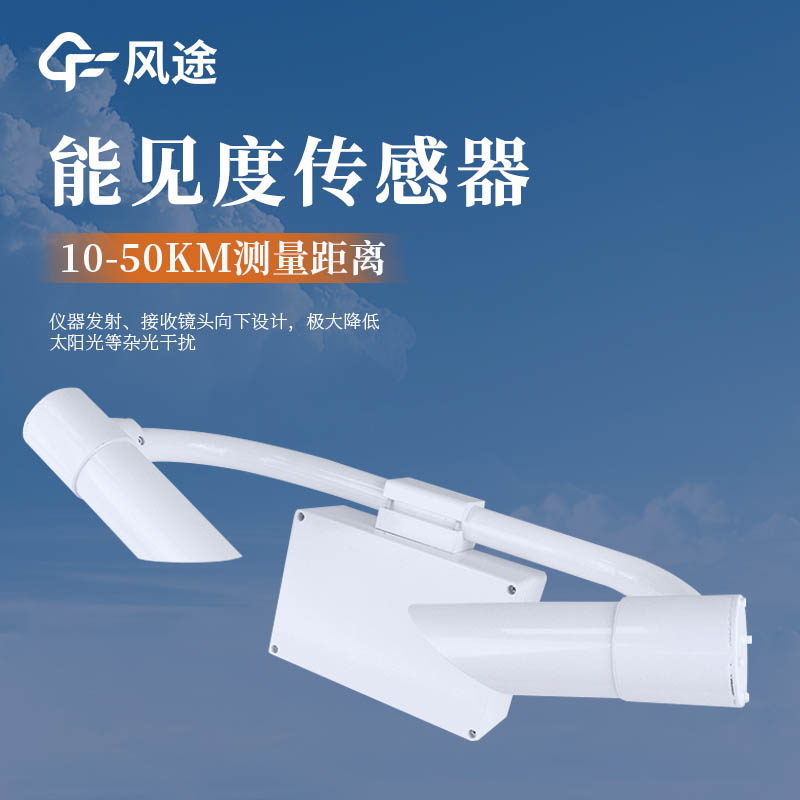Shandong Fengtu IOT Technology Co., Ltd
Sales Manager:Ms. Emily Wang
Cel,Whatsapp,Wechat:+86 15898932201
Email:info@fengtutec.com
Add:No. 155 Optoelectronic Industry Accelerator, Gaoxin District, Weifang, Shandong, China

Sales Manager:Ms. Emily Wang
Cel,Whatsapp,Wechat:+86 15898932201
Email:info@fengtutec.com
Add:No. 155 Optoelectronic Industry Accelerator, Gaoxin District, Weifang, Shandong, China
time:2024-12-09 09:31:51 source:Weather Station viewed:355 time
In meteorological observation work, visibility is a key element. It intuitively reflects the transparency of the atmosphere and is related to many fields such as traffic travel, aviation and shipping safety. Briefly speaking, visibility refers to the maximum distance at which a person with normal vision can clearly distinguish a target object from its background.
Nowadays, the determination of visibility mainly relies on two observation methods, namely instrument-based and manual ones. Instrument-based observation is efficient and accurate. Common ones include transmissive Visibility detectors and scattering Visibility detectors. When the transmissive Visibility detector is working, the transmitter emits parallel light towards the receiver at a fixed distance away. The dust and water vapor particles in the atmosphere will cause the attenuation of light. The instrument will conduct precise calculations based on the attenuation degree combined with the built-in calibration coefficients and quickly give the visibility value. It can often be seen around airport runways, safeguarding the take-off and landing of flights. The scattering Visibility detector is small and flexible. It operates based on the principle of light scattering. The built-in light source emits light, and when it encounters particles in the air, scattering occurs. The detector captures the scattered light and converts it into an electrical signal. After some processing, accurate visibility data will be obtained. It is favored by many meteorological observation stations.
Although manual observation is a bit more traditional, it is also indispensable. During the day, observers will select open areas with a wide field of view and lock onto target objects that meet the requirements, such as clearly outlined and dark-colored mountains or highly recognizable buildings. As the amount of dust and smoke in the air gradually increases and the shape and color of the target object gradually become blurred, the observer records the distance between it and the observation point to estimate the visibility. However, manual observation is affected by subjective factors. Different observers have different visual acuities, and the results may have deviations. At night, lights become the key observation objects. Parameters such as light intensity need to be known in advance. Lighthouses are typical targets. If the light is dim and the outline is blurry, observers will calculate the current visibility according to their experience and light information to safeguard the safety of nighttime travel. The two observation methods have their own advantages and disadvantages and complement each other, jointly ensuring the accuracy of visibility data.

In the current era when the concepts of ecotourism and healthy living are widely spread, natural oxygen bars have become popular leisure destinations for people. As a key facility for measuring and maintaining the ecological quality of these areas, the Environmental Monitoring Station demonstrates t...
The Stainless Steel Tipping Bucket Rain Gauge is the most classic rain gauge. It collects rainwater through an inclined funnel. When the rainwater reaches a certain amount, the tipping bucket below tilts and dumps the water. After the sensor detects this action, the rainfall can be determined.It can...
Research-grade equipment for environmental monitoringis becoming a tool for tourist attractions, nature reserves, and urban management departments.The concentration of negative air ions is one indicator of air quality. To meet the demand for atmospheric negative ion observation from relevant d...
Environmental Monitoring Station captures the concentration of negative oxygen ions in the air around the clock, relying on IoT technology to provide data support for environmental health and ecological value....